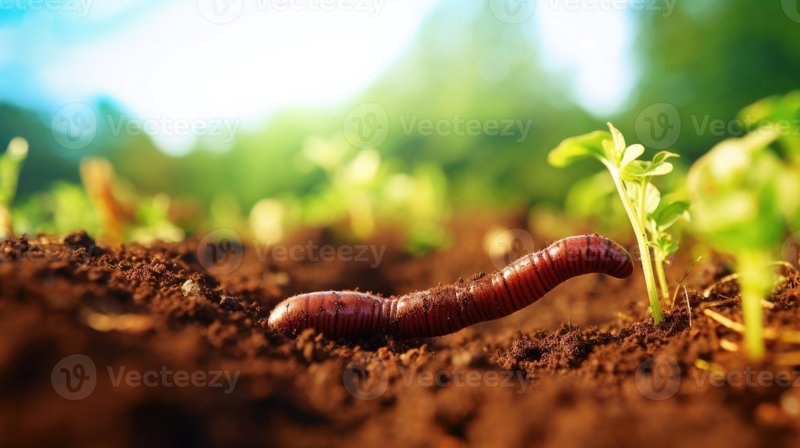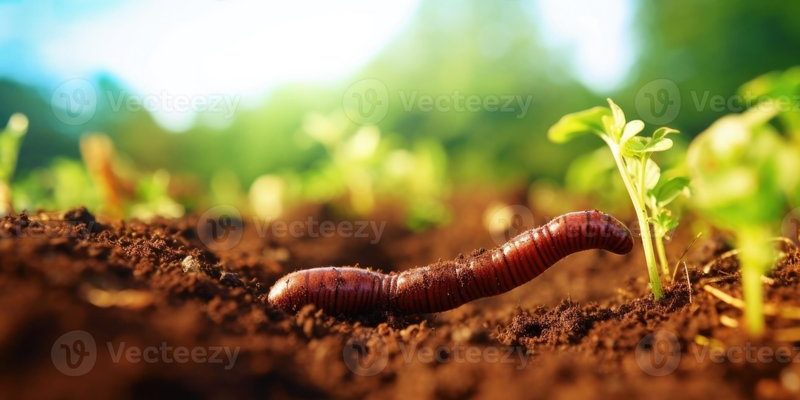
You might be wondering why earthworms are so important. Well, think of them as nature’s recyclers. They break down organic matter, turning it into nutrient-rich soil that plants love. This process, called **vermicomposting**, is vital for maintaining soil health and fertility. By adopting organic practices, we can protect these wigglers while benefiting our gardens and landscapes. So, let’s dive into how we can conserve earthworms and, in turn, boost our gardening game.
Understanding Earthworm Ecosystems
First off, let’s take a closer look at earthworm ecosystems. Earthworms thrive in moist, nutrient-rich environments where they can munch on decaying leaves, grass clippings, and other organic materials. When earthworms digest this material, they create *castings*, which are rich in nutrients that plants need.
In a healthy garden, earthworms can be found in varying numbers, depending on factors like soil type, moisture, and organic matter presence. Think of them as the unsung gardeners of the soil. They aerate the ground, allowing water and nutrients to penetrate deeply, while their burrowing creates channels that help roots grow and expand.
But what harms these vital creatures? Various factors, including synthetic chemicals, soil compaction, and even excessive tilling can disrupt their habitats. Understanding what affects earthworms is the first step toward conserving them effectively.
Practicing No-Till Gardening
One of the best organic practices for earthworm conservation is **no-till gardening**. When we till the soil, we disrupt the earthworm habitats. It’s like digging up their home and scattering everything. Instead of turning over the soil, no-till gardening allows us to maintain the structure that earthworms love.
The key is to build your garden’s soil health from the top down. Start with a layer of compost or mulch, which breaks down over time and enriches the soil naturally. Earthworms will thrive when they have access to this upper layer of organic matter without the disturbance of conventional tilling.
Some practical tips for no-till gardening include:
- Using cover crops like clover or vetch to enrich the soil.
- Adding organic mulch to protect soil and retain moisture.
- Utilizing raised beds to minimize soil compaction while still providing a rich growing environment.
Let’s be honest: using no-till methods might require some adjustment in routine, but the long-term benefits are worth it. Your garden will flourish, and so will the earthworms!
Reducing Chemical Use
Here’s the thing: earthworms are sensitive to chemicals, especially pesticides and synthetic fertilizers. These products can harm or even kill worms, disrupting the delicate balance of the soil ecosystem. If we want to conserve earthworms, we need to *reduce* or *eliminate* our use of harmful substances.
Instead of chemical fertilizers, consider using natural amendments like compost, worm castings, or aged manure. These organic options provide the nutrients plants need without harming soil life. Plus, they promote a healthier environment for earthworms to thrive.
You might think that omitting chemicals will hurt plant growth, but it’s often the opposite. Healthy soil teeming with earthworms leads to better plant growth. It turns out, the greener option is also the healthiest!
Creating Habitat Diversity
Just like us, earthworms thrive in diverse environments. Creating a habitat that includes different types of plants can help support a vibrant worm population. For instance, incorporating perennial plants and native species into your garden not only boosts biodiversity but also provides a range of organic matter for earthworms to consume.
Consider planting a variety of cover crops throughout the year. These crops can be turned back into the soil, providing nourishment while also maintaining moisture and structure.
It’s kind of like mixing up a buffet for earthworms. The more options they have, the better they can thrive! A diverse garden will attract more earthworms and create a vibrant ecosystem that benefits your plants.
Composting for Earthworms
**Composting** is one of the best ways to contribute to earthworm conservation. By composting kitchen scraps and yard waste, you’re not only reducing landfill waste but providing a fantastic food source for earthworms.
When you create a compost pile, be sure to include materials like vegetable peels, coffee grounds, and dried leaves. Just remember to avoid adding meat or dairy, as these can attract unwanted pests.
Over time, the compost will break down, enriching the soil. Earthworms love it and will naturally migrate to your compost pile. If you’re feeling adventurous, you might even take it a step further and set up a **vermicomposting system** using a worm bin. It’s a fun and educational project that can yield rich compost for your plants.
Watering Wisely
Believe it or not, how you water your garden affects earthworms. Earthworms need moisture to survive, but too much water can lead to problems like soil erosion or drowning. To conserve earthworms, it’s important to strike a balance.
An excellent practice is to water deeply but less frequently. This method encourages deep roots and helps maintain a moist environment for earthworms. Mulching around plants can also help retain moisture, reducing the need for watering.
Check your soil moisture regularly, sticking your finger in about an inch deep. If it feels dry, it’s time to water. Keeping a watchful eye on soil moisture not only aids plant health but also keeps those wriggly friends happy and safe.
Monitoring Soil Health
Lastly, monitoring soil health is key in promoting earthworm conservation. Healthy soil is alive with organisms, including earthworms, and assessing its condition can tell you a lot.
Consider testing your soil’s pH, nutrient levels, and organic matter content. You can find home test kits at garden stores, or you can send samples to a lab for a thorough analysis. This step is essential because healthy soil encourages earthworm populations to thrive.
If you notice a decline in earthworm activity, it might indicate that your soil has become compacted or that nutrient levels have changed. By performing regular assessments, you can adjust your gardening practices to ensure the earthworms remain a vibrant part of your garden ecosystem.
In closing, conserving earthworms is not just an act of kindness to these little creatures but a smart way to enrich our gardens and landscapes. By practicing no-till gardening, reducing chemical use, creating diverse habitats, composting, watering wisely, and monitoring soil health, we can foster environments where earthworms flourish. So, let’s commit to these organic practices and keep our gardens — and our earthworms — thriving!

